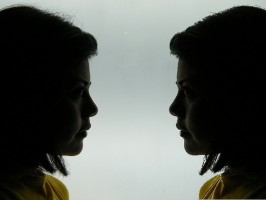
Welcome to our first Terpsichorus discussion!
If you haven’t yet watched the film, don’t panic! You can still download and watch the film at the locations below. Feel free to come back and add your thoughts, questions, or comments after you do. The discussion will remain open indefinitely (I may close comments eventually but not for a while!).
 |
 |
Look out below
I’ve posted some flash responses offered during preliminary email discussion between Steve, Robin, and myself (Nichelle). These are just to stir some conversation. You can comment on any of our comments!
Also, you’ll find some viewing prompts. These are open questions that you can choose to answer or not. If you find you’re at a loss for words, these may be good starting points.
Note: I am roughly considering Part I, anything that occurs before the big set change, and of course, Part II anything after it.
An extended list of viewing prompts, should you want to watch with it in front of you, is available here.
Spread the word
Don’t forget to invite and share with friends. If you’re on Twitter or Facebook, use the sharing buttons above (on the site). Include the #terpsichorus hashtag on Twitter, if you would! If you follow our pages on Facebook you can tag us with @Dance Advantage or @You Dance Funny in a status update and let use know you’re watching.
Steve on Twitter | Nichelle on Twitter | Robin on Twitter
You Dance Funny on Facebook | Dance Advantage on Facebook
The Movement
 “Aesthetically, I find the vocabulary beautiful in its awkwardness… Occasionally something resonated on a human/emotional level but mostly I watched with interest from visual moment to moment.” – Nichelle
“Aesthetically, I find the vocabulary beautiful in its awkwardness… Occasionally something resonated on a human/emotional level but mostly I watched with interest from visual moment to moment.” – Nichelle
“I’m finding the movements get repetitive, they are much the same tempo throughout without any particular highs or lows. There is a bit in the early men’s section where one guy sort of crab walks backwards, partially supported by another guy, that i thought was awesome.” – Robin
“I found the patterned, more structured moments to be more pleasing to watch, a theme that was sort of echoed in the geometric shapes cast on the floor.” – Steve
“I felt like there were three main “modes” he was operating within the choreography. Don’t know if it’s true for his other work too? One, is fast, forceful, and angular. Two is very sinewy and sleek. Three is what I’m dubbing “the pterodactyl” – hyperexteded spine, inward rotation, bird-like. The mood, music, lighting, set, etc. had a lot of variety and it was interesting how he used these “modes” throughout all of those changes.” – Nichelle
List 3 adjectives describing McGregor’s movement vocabulary (or body of movements).
How would you describe the shift in mood, movement, and emotion that occurs with the change in costume, lighting, and music in Part II?
The Music, Sets, Costumes, & Lighting
“I don’t enjoy the music!… I do think the dancers execute the movement brilliantly and they are all very beautiful but really, i am just not liking it.” – Robin
“I will say that MacGregor’s work is intense and he has a genius ability to visualize (and actualize!) incredibly innovative sets and choreography.” – Steve
The shapes and diagrams on the floor are used in what way by the dancers? How do their movements and interactions relate to these projections?
What did you notice about the lighting and its relationship to changes in mood and music?
The Dancers
“The dancers all have extreme range of motion, which is why I think it’s not surprising that he works with ballet companies. At the same time, much of his vocabulary must seem alien and in great contrast to the training of ballet dancers.” – Nichelle
“Overall, I thought Entity was visually captivating, and MacGregor definitely creates unusual lines and shapes, which was also something I had a problem with. He uses flexibility to the extreme, and while all dancers must achieve a certain level of range, it was pretty clear there was no disparity among the dancers he selected to be in his company–especially the men. They were all the sinewy, hyper-mobile type and I have a tendency to think that if a company/piece is far too grounded in the “look” of a dancer, then there’s a chance the choreography isn’t speaking for itself, and I definitely saw moments of that in the performance.” – Steve
Are there performers who stand out to you? Why?
How do dancers use their faces throughout? What do they convey?
The Concepts and Themes
“I was still fascinated with how alien it looked, and it reminded me of how there are so many processes in our own bodies on a microscopic level that watching them would be just as alien, and yet still organic. I sort of imagined the dancers as parts of cells, which do move but you don’t know what motivates them to do so because they don’t have “brains” to tell them to do something. All structures within a cell have to cooperate with one another and function in a shared space and that’s what I felt like I was looking at…as if the ‘Entity’ is a larger being and we’re just seeing the tiniest fraction of it possible.” – Steve
“I like your observation about cells and how the dancers seemed part of an organism or entity. What I’m considering Part II (after the set changes and there’s that transition with all the projections and costume changes) seemed much more human to me. Almost like we’re no longer looking through the microscope.” – Nichelle
What is the significance of the Greyhound that “bookends” the work?
What images do you recognize among the variety of projections during this transition? What significance, if any, do they hold for you?
 Quick tips on commenting
Quick tips on commenting
Comments on this site are threaded. This means that it is possible to reply to another comment and have it show up directly below the comment you wish to address. To do so be sure to use the reply link directly below the comment you wish to address.
Replying via the blank comment field will create a new “thread” and will appear at the bottom of all other comments until someone new posts their own comment.
Alright, let the discussion commence!
(…post your comments, already!)
Nichelle Suzanne is a writer specializing in dance and online content. She is also a dance instructor with over 20 years experience teaching in dance studios, community programs, and colleges. She began Dance Advantage in 2008, equipped with a passion for movement education and an intuitive sense that a blog could bring dancers together. As a Houston-based dance writer, Nichelle covers dance performance for Dance Source Houston, Arts+Culture Texas, and other publications. She is a leader in social media within the dance community and has presented on blogging for dance organizations, including Dance/USA. Nichelle provides web consulting and writing services for dancers, dance schools and studios, and those beyond the dance world. Read Nichelle’s posts.

